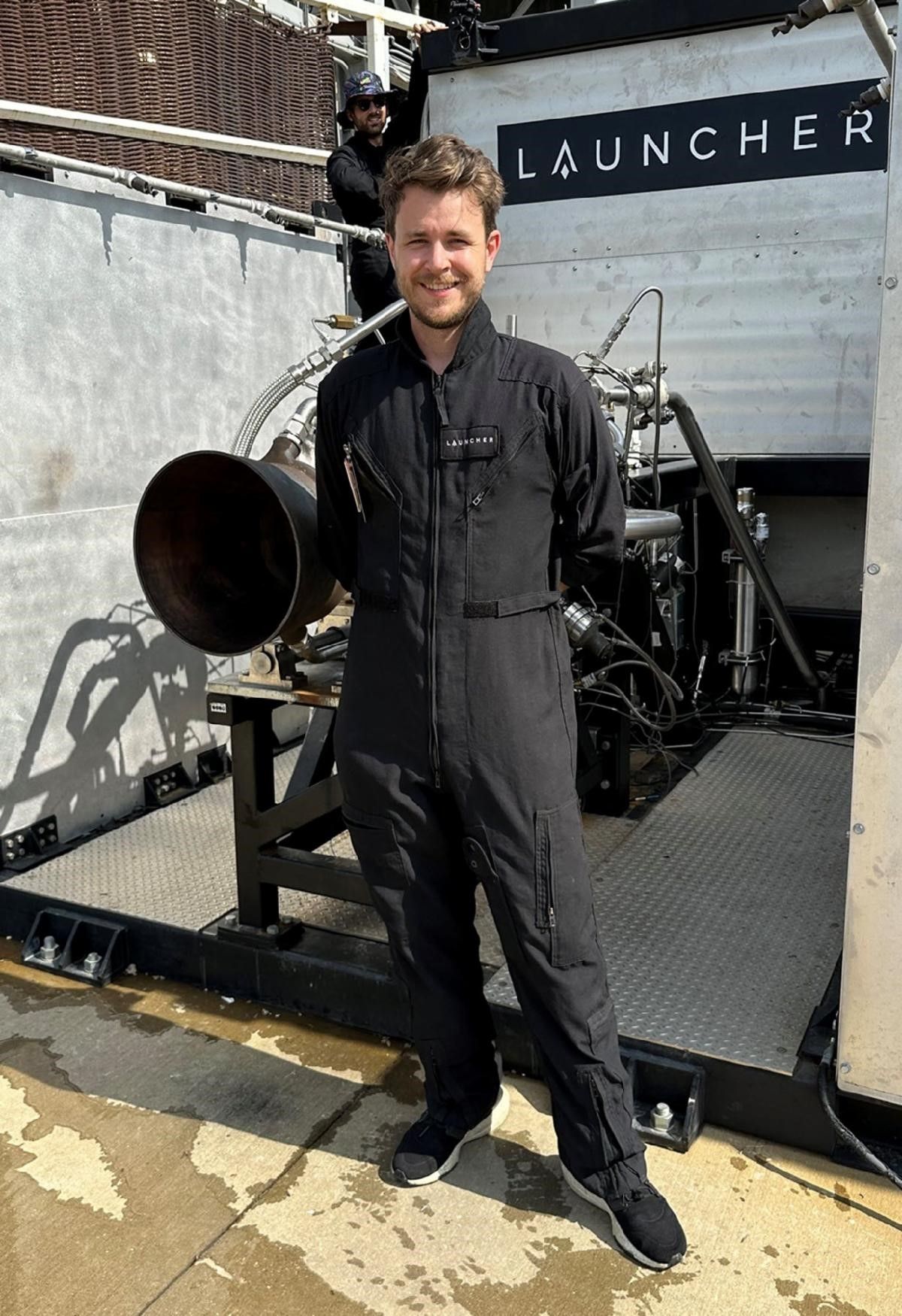The admiration was mutual. “Patrick stepped in around the Christmas 2021 timeframe,” said Lesan. “I learned that he was working on turbomachinery through his internship at Launcher [a Vast company]. That set the stage for our collaboration right there. Patrick learned more and more about my initial design in early 2022, and then took over our project entirely that year in terms of getting parts made and working with partners. He carried on with the drawings, manufacturing documents, CFD and final deliverables,” said Lesan.
The push toward part consolidation
The last five years have seen tremendous advances made in space and rocket technology. Independent engineers and commercial companies alike are working toward single-part rocket designs and consolidated manufacturing approaches. The goal is to rely less on machining, casting, brazing, and traditional joining techniques that hold back functional performance, decrease reliability and source from a dwindling supply chain. Lesan and Watson embrace these targets as well.
“A lot of companies cast their parts,” said Watson. “The real big breakthrough in turbomachinery for space or energy is 3D metal printing, Laser Powder Bed Fusion (LBPF), mostly. We can now print the performance geometries we want, iterate the designs, get the surfaces we need, and use machining more selectively. Metal 3D printing makes our project possible. Zach and I used our intern salaries to fund what wasn’t donated or discounted. Imagine us spending tens of thousands of dollars on machining traditional parts or removing support structures.”
The academic aims of the Reaper engine (named after a South Carolina hot pepper), were to explore agile and more economical means of rocket manufacture. Both Zach and Patrick understood that the success of this project and, to a degree, the nature of their future aerospace careers depend on lowering the cost of space flight.
AM benefits inform the design
With his early studies in solid-state rockets as a teenager and so much data on turbopumps in hand since 1960s, Lesan had the basics in place for the design work he was to undertake at CU Boulder. He now needed to create his own MethaLOX model, one that took advantage of advanced metal AM. Here was the only distinction he felt he could make. Turbopumps are a known entity. Lesan didn’t expect to improve upon their performance, but perhaps through AM he and Watson could lower costs and improve reliability over existing systems.
Part consolidation serves to boost quality by eliminating component sealing interfaces, an historic source of failure. Turbopumps have long relied upon seals to join their sections. Despite generational advances, seals are still a risk area given the high fluid/gas pressures involved in the pump and turbine units.
“We have gotten rid of so many potential traditional failure modes by minimizing part count,” said Lesan. “The issue then with AM is porosity and part verification. We can look at our Velo3D build reports and see there were no errors in the process impacting quality.”
“There are some parts we had to buy or conventionally manufacture,” said Watson. “The purchased parts are fittings, bearings, seals, and fasteners to join flange sections. But otherwise, the focus was on creating a work-friendly, lower-cost system, that avoids traditional fit problems through combined parts. There is a safety issue here, too,” notes Watson. “The inner propellent seals, made as one part, is outside the norm. By using a nitrogen-purge system, that is integrally printed throughout the Reaper turbopump housings, we effectively eliminate the chances of propellants mixing and causing catastrophic failure. We are able to reduce leakage losses, avoid performance problems, and even explosions. A single AM-produced part, relying on challenging overhang angles and approaches, accomplishes this goal.”
Partner help
Lesan and Watson’s fast track to rocket development was aided by many who share a passion for space. From the CU Bolder Aerospace program there was Professor John Farnsworth, and Cameron Micksch and Paul Wingrove from the university’s machining lab.
Private industry stepped in with software, services, parts and advice. The core team of two did their metal printing with Velo3D, used critical design software and ongoing help from CFturbo, and machining services from Silicon Valley Elite Manufacturing and EMP. They also received seals from Gallagher Fluid Seals and instrumentation from Kulite and Omega. Advice flowed informally from individual engineers at both their internship companies, SpaceX and Launcher, as well as Ursa Major and from Andrew Mitchell, formerly with Masten Space Systems, now Astrobotic.
“The extent of industry collaboration that Zach and Patrick have created is truly impressive,” said Sid Raje, Velo3D business Development Account manager. “They have built upon where industry is headed with liquid oxygen and methane propulsion, but the extent of their use of advanced AM for part consolidation and demanding geometries, surfaces and overhangs really stands out. The reduction of post-processing costs and improved system reliability is a lesson they and others will carry forward.”
Velo3d.com






